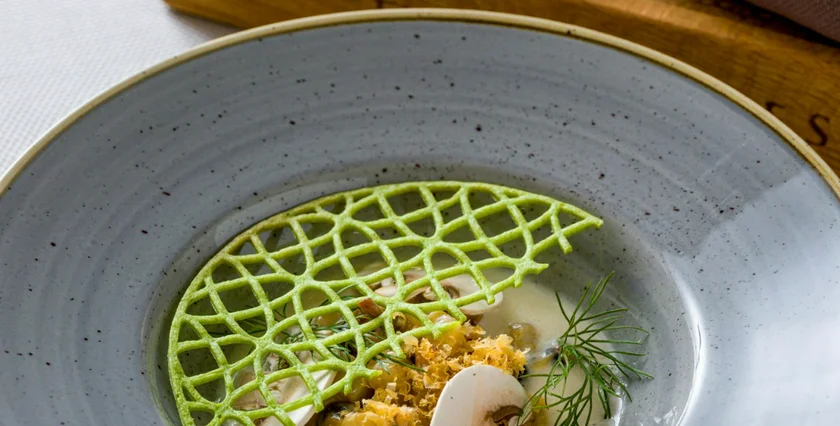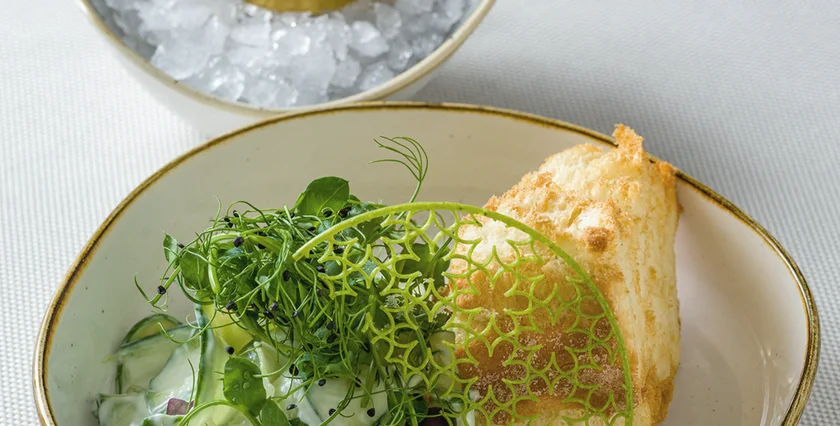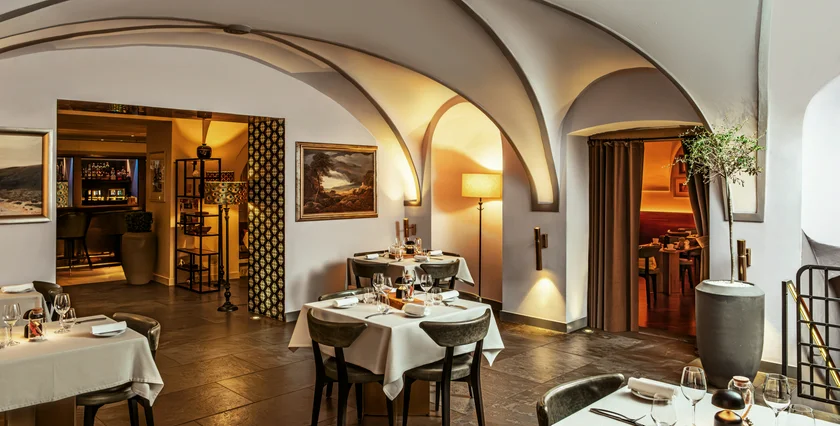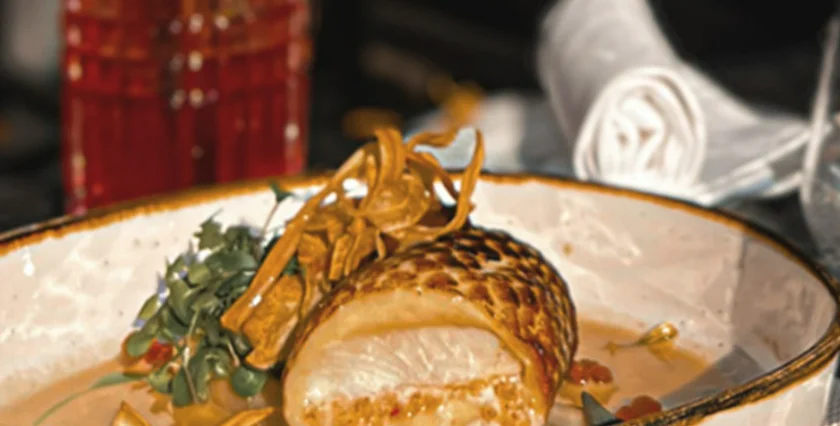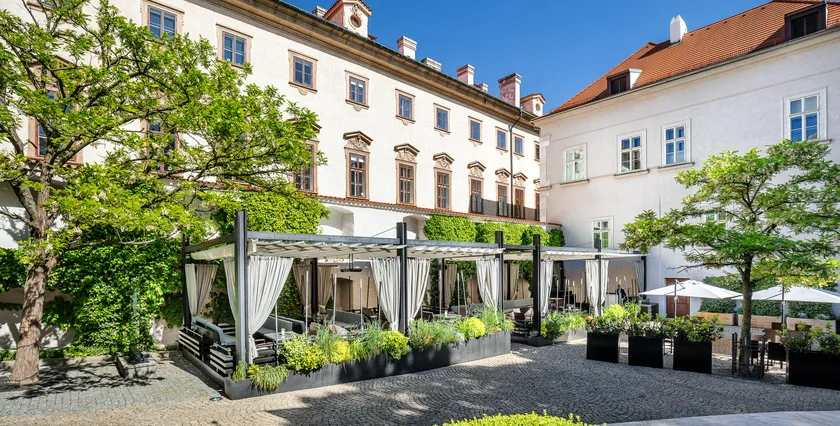Prague is a city built upon stories – stories about its vibrant culture, rich history, ornate architecture and flavorful culinary heritage.
The Mandarin Oriental checks a lot of these boxes. The five-star hotel has been a prominent fixture along Malá Strana’s busy Karmelitská thoroughfare for nearly two decades, but the building’s story, like most landmarks in the Czech capital, dates back centuries.
Situated on the site of a former 14th-century Dominican monastery, hotel management worked closely with the city’s Monuments Preservation Office while renovating the property where Gothic, Renaissance and Baroque architecture styles intersect and historic seamlessly meets contemporary design.
In fact, architects and interior designers went out of their way to avoid introducing any faux old elements into the upgrades made to the Mandarin Oriental prior to its 2006 opening. That decision has allowed the complex’s historic features, like the vaulted ceilings and polished parquet floors in the guest rooms and the Gothic church ruins showcased under the glass flooring of the popular hotel spa, to shine bright.
This dedication of mixing historic with modern recently found its way into the hotel kitchen. After years of hosting an Asian fusion restaurant, the Mandarin Oriental decided to try something new, opening Monastiq – a culinary tribute to Czech heritage – at the end of May to much fanfare.
Tucked in the Renaissance wing off the lobby bar, the restaurant serves contemporary local dishes that draw on historic Bohemian recipes.
One-of-a-kind Prague dining experience
“One thing I knew was that we did not want to do what everyone else was doing. We had to do something different,” says Eric Gervy, the hotel’s manager.
Gervy turned to Dinner by Heston Blumenthal, the Mandarin Oriental’s famous Michelin-starred restaurant at its Hyde Park London property, which bases its modern menu selection off very old English recipes, for inspiration.
The concept was an instant hit with both locals and tourists, and Gervy had a hunch this unique approach would really take off in Prague.
🎄 For the upcoming Christmas season, Mandarin Oriental Prague has prepared a special festive offer. This includes a five-course Christmas menu at Monastiq restaurant, blending Czech traditions with modern flavors. The hotel will also host a New Year's Eve cocktail party featuring live music, where guests can experience the magical winter atmosphere and savor authentic Czech heritage cuisine. Additionally, visitors can enjoy specially crafted winter-themed snacks and beverages al fresco on Monastiq restaurant's decorated, heated terrace, embracing the holiday spirit in comfort and style.
“It would push us to do something not traditional, which you find pretty much everywhere here but to go historical,” says Gervy. “Most of the traditional dishes here come from the 50s and 60s. We wanted to go a lot deeper into Czech history than that.”
More than just digging deep, Gervy’s ambitious restaurant plans also called for telling the story behind each dish selected for the revamped menu. To that end, he spent months pouring over books with Executive Chef Michal Horváth and Sous Chefs Aleš Bursík and Tadeáš Synek to get the details of the Czech’s rich culinary history as accurate as possible.
“It was not easy, because as everybody knows, the Czech Republic was invaded several times and as the invasions happened, they burned the books, so it was quite difficult compared to other countries.”
“We did a lot of research. It was very important for us to come as close to the reality and the true history and the true stories of each of these old recipes as we could,” says Gervy.
All those months of endless research paid off, resulting in what by all accounts has turned into a one-of-a-kind Prague dining experience.
Historic dishes with a contemporary flair
Monastiq allows guests to discover the rich history of Czech cuisine, through historic recipes that have been reimagined into stylish and modern dishes that use fresh seasonal ingredients.
Each menu item is accompanied by a short story on its origins. Take, for example, “Bohemian Aristocrat.” This dish – already a fan favorite – was inspired by a Czech general in the Austrian Army. Monastiq’s version of this 19th-century recipe includes a decadently crafted veal schnitzel with warm potato salad, cornichon and apple vinegar.
By comparison, “Ponds and Monks ,” another popular order, combines crayfish and perch with salsify and black garlic. Its accompanying story shares how, at the turn of the 12th century, the first Czech ponds were founded by Christian monks, with crayfish dishes first appearing in cookbooks from the mid-1500s.
“There are a lot of restaurants in Prague that do modern Czech, but for us, we want to put the accent on the historical part, because the dishes are really based on whatever we could find from writings and articles and books,” says Gervy.
A Prague building registration card they unearthed for a chocolate factory on Celetná Street, for instance, led to “Prague’s Wonka,” a dessert featuring chocolate ganache and cherries. The decadent mix of apple, cream, rum and cinnamon in “Bun, Bun, Baba,” meanwhile, came from a 15th-century cookbook written by Severín Mladší.
“These are the stories we want to tell,” says Gervy.
Staying true to original ingredients
While people’s palettes have evolved over the years, Chef Horváth aims to stay as true as possible to the original ingredients. He and his team held numerous tastings, going through different iterations of each dish before landing on a final version.
He knew there was no room for mistakes: “Prague is small, people talk.”
But so far, he says, the feedback has been amazing.
Indeed, it seems that word is spreading quickly. On a recent Monday night, the dining room, its dramatic vaulted ceiling making the space feel more intimate, had an impressive steady stream of guests coming for an early dinner.
Our server, Honza, offering his personal suggestions on the menu selection, expertly paired our starter – “To The Rescue,” a crisp potato pancake topped with duck prosciutto, rhubarb, goat cheese, marjoram from an 18th-century cookbook – with a refreshing white from South Moravia.
Our main course – “Spots & Apple,” beef filet, with potato dumplings, baked applesauce and a history lesson on Czech cattle – followed with an excellent dry South Moravian red.
Monastiq is positioning itself as a “relaxed but elegant upscale setting in the heart of Prague.” But our evening visit, peppered with friendly banter from the wait staff (frankly, a rarity these days), felt more like having a cozy home-cooked meal among friends, eager to share tales from the Czech’s long-revered culinary history.












 Reading time: 5 minutes
Reading time: 5 minutes 

